Piping flanges play an important role in various industries like oil and gas, petrochemicals, and manufacturing. They help connect pipes, valves, and equipment while ensuring that fluids flow efficiently and don’t leak out. Understanding the different types of flanges, what they do, and where they’re used is essential for working with piping systems. In this article, we’ll explore ten common types of flanges and their specific functions.
The Basics of Piping Flanges
Flanges are connectors that join pipes, valves, or equipment together. They consist of three parts: a metallic flange (which attaches to the pipe), a gasket (that seals the connection), and bolts (that hold everything together). Flanges allow for easy system maintenance by enabling the disassembly of joints when needed.
The Main Types of Piping Flanges
Let’s take a closer look at ten types of flanges and how they’re used:
1. Slip-On Flanges

Image Source: Texas Flange
These flanges attach to a pipe with two welds: one inside the flange and one outside it.
Function: They work well when the flange’s bore (the hole in the center) is larger than the pipe’s outer diameter. The pipe slides inside the flange and is connected with a weld.
Applications: Commonly used in fluid pipelines.
2. Threaded Flanges
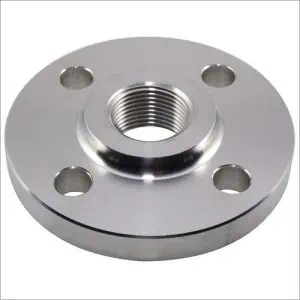
Image Source: Texas Flange
Threaded flanges have threads inside the bore, which match the threads on the pipe.
Function: These flanges offer a simple and fast connection but aren’t suitable for high-pressure or high-temperature situations.
Applications: Typically used in utility services like air and water systems.
3. Weld Neck Flanges
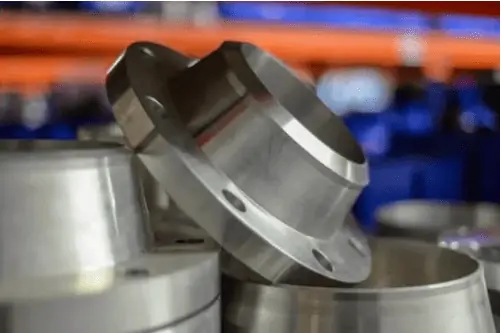
Image Source: Texas Flange
Also known as high-hub or tapered hub flanges, they have a neck that helps distribute tension within the pipe.
Function: These versatile flanges can handle both high and low-temperature conditions, making them suitable for many applications.
Applications: Used across various industries, even in high-pressure situations.
4. Socket Weld Flanges
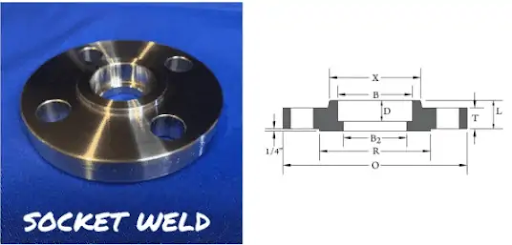
Image Source: Texas Flange
Socket weld flanges connect to pipes with a single weld done outside the flange.
Function: A small gap is maintained when inserting the pipe into the socket to ensure proper alignment during welding.
Applications: Ideal for compact, high-pressure pipe systems carrying non-corrosive liquids.
5. Blind Flanges
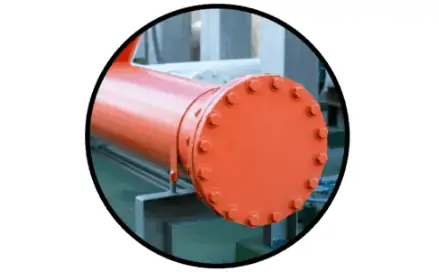
Image Source: Texas Flange
Blind flanges don’t have a bore and are used to block fluid flow by sealing pipe ends or other openings.
Function: These flanges can handle substantial mechanical stress from system pressure and bolting forces.
Applications: Useful for blocking off unused nozzles on tanks and conducting pressure tests in industrial plants.
6. Lap Joint Flanges
Lap joint flanges have a flat face and are used exclusively with a stub end.
Function: They have a unique design that allows the flanged part of the stub end to fit perfectly.
Applications: Often chosen for cost-effective connections, especially for stainless steel or nickel alloy pipelines.
7. Long Neck Weld Flanges
Long Neck Weld Flanges, often referred to as WNRF (Weld Neck Raised Face) flanges, are a crucial component in various piping and industrial applications. These specialized flanges are designed with a long, tapered neck that extends from the base of the flange. This elongated neck serves several important purposes in the field of pipeline and pressure vessel connections.
Function: They resemble standard weld neck flanges but have an extended neck that acts like an extension bore.
Applications: Commonly used in anchoring water mains or gas sources in large pipe networks.
8. Reducing Flanges
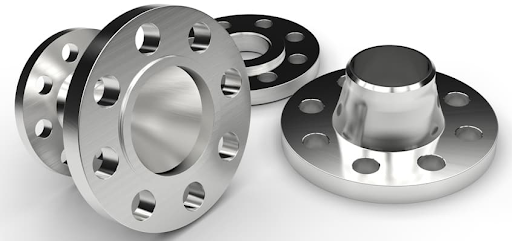
Image Source: Texas Flange
Reducing flanges, or reducer flanges, are designed to reduce the size of a pipe.
Function: They help transition from a larger pipe to a smaller one without needing extra fittings.
Applications: Used when connecting pipes of different sizes.
Flange Face Types
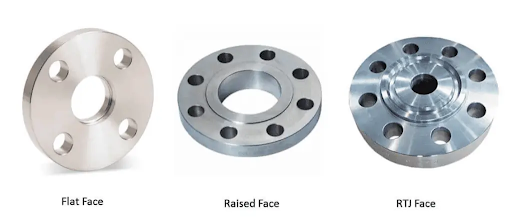
Image Source: Texas Flange
Flange face types are essential for ensuring proper seals with gaskets. Common flange face types include:
- Raised Face: Featuring a raised lip at the back, these are common in lower pressure classes.
- Flat Face: With a smooth, flat surface, these are used in lower pressure classes as well.
- Ring Type Joint (RTJ): Ideal for high-pressure applications with a groove for effective sealing.
- Tongue and Groove: These use a protruding tongue on one flange and a matching groove on the other for a tight seal.
Flange Markings
Flanges typically bear markings with essential information like size, material type, pressure rating, and manufacturing standards.
Frequently Asked Questions (FAQs):
- What is a piping flange?
A piping flange is a component used to connect pipes, valves, and equipment in a piping system. It ensures a secure and leak-proof connection.
- Why are flanges used in piping systems?
Flanges allow for easy assembly and disassembly of piping components, making maintenance and repairs more accessible. They also provide a reliable seal to prevent leaks.
- How are flanges classified based on connection types?
Flanges can be classified based on connection types such as weld neck, threaded, socket weld, slip-on, and lap joint, among others.
- What’s the difference between socket weld and slip-on flanges?
Socket weld flanges require welding only on the outside of the joint, while slip-on flanges need welding on both the inside and outside of the joint.
- What is the purpose of lap joint flanges?
Lap joint flanges are used in conjunction with stub ends to create a cost-effective mechanical connection. They are suitable for stainless steel or nickel alloy pipelines.
- Where are weld neck flanges commonly employed?
Weld neck flanges are used in both high and low-temperature applications and can withstand high pressure. They are ideal for critical piping systems.
- What are orifice flanges used for?
Orifice flanges are used with orifice meters to measure the volumetric flow rate of liquids or gases in a pipeline.
- Are there special types of flanges like Weldo and Nipo flanges?
Yes, Weldo and Nipo flanges are combinations of welding neck flanges with branch fittings like Nipolets. They are used for branching off pipelines.
- Where can I find more information and visuals on piping flanges?
You can refer to websites like Texas Flange for detailed information and images of various piping flanges.
Conclusion
Piping flanges come in various types, each suited to specific applications and conditions. Understanding these flanges’ unique features and where they excel is vital for maintaining the integrity and safety of piping systems. Whether working with high-pressure pipelines or smaller utility systems, selecting the right flange is critical for efficient fluid flow and leak prevention.